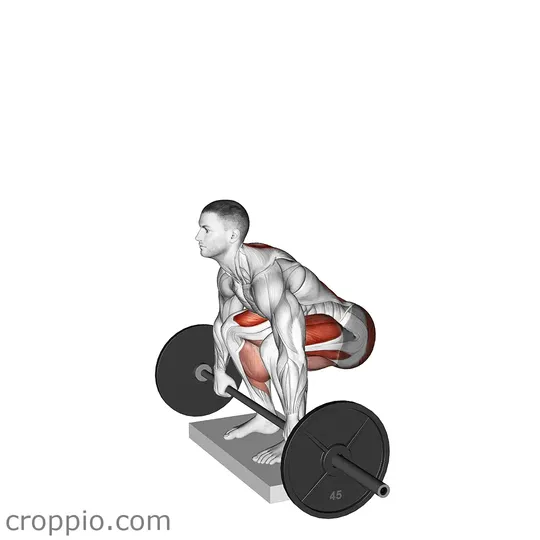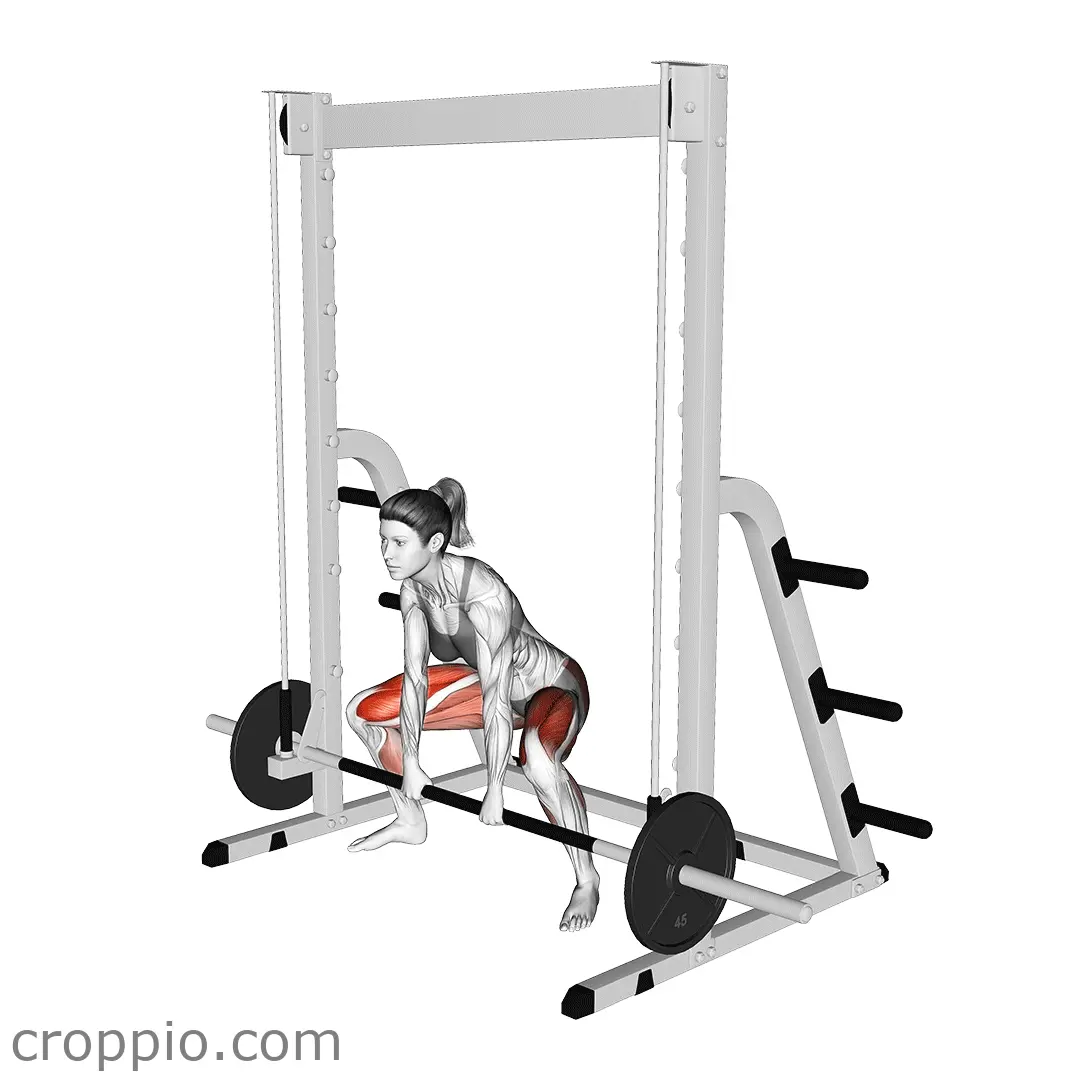Deficit Deadlift

Muscles Involved
The deficit deadlift primarily targets the posterior chain, including the gluteus maximus, hamstrings, and lower back (erector spinae). This variation emphasizes the stretching of these muscles, increasing range of motion and strength development. Secondary muscles engaged include the quadriceps, forearms, and upper back (trapezius and rhomboids), which help stabilize the lift and maintain proper posture throughout the movement.
Top Mistakes
- Starting with too much weight: Beginners often underestimate the difficulty of the lift, which can lead to poor form and increased risk of injury.
- Incorrect hip position: Allowing the hips to rise too quickly can shift the load away from the legs and lead to back strain.
- Neglecting to keep the bar close: Failing to maintain a close bar path can result in inefficient lifting mechanics and additional strain on the back.
Execution Tips
- Use elevated platforms: Set up the barbell on a platform that is 1-4 inches off the ground to create the deficit, allowing for a deeper engagement of the muscles.
- Adopt a shoulder-width stance: Position your feet shoulder-width apart with your toes slightly pointed outward for better stability.
- Engage your core: Before lifting, brace your core to create a solid base and protect your lower back.
- Maintain a neutral spine: Focus on keeping your back flat and chest up throughout the movement to avoid rounding the spine.
- Drive through your heels: Initiate the lift from your heels rather than your toes to prioritize the activation of the posterior chain.
Workouts
The deficit deadlift can be incorporated into a strength training workout routine as follows: aim for 3-4 sets of 6-8 reps, allowing for sufficient rest (1-3 minutes) between sets to recover adequately. It pairs well with other compound movements, such as barbell squats or Romanian deadlifts, to create a comprehensive leg and posterior chain workout. For advanced athletes, consider integrating deficit deadlifts on a leg day alternating with traditional deadlifts in separate sessions to maximize strength gains.
Conclusion
The deficit deadlift is a powerful exercise that aids in developing strength and size in the posterior chain, improving overall deadlift performance and athletic capability. By focusing on form and avoiding common mistakes, this exercise can significantly enhance lower body strength, promote muscular balance, and reduce the risk of injury during traditional lifting exercises.



